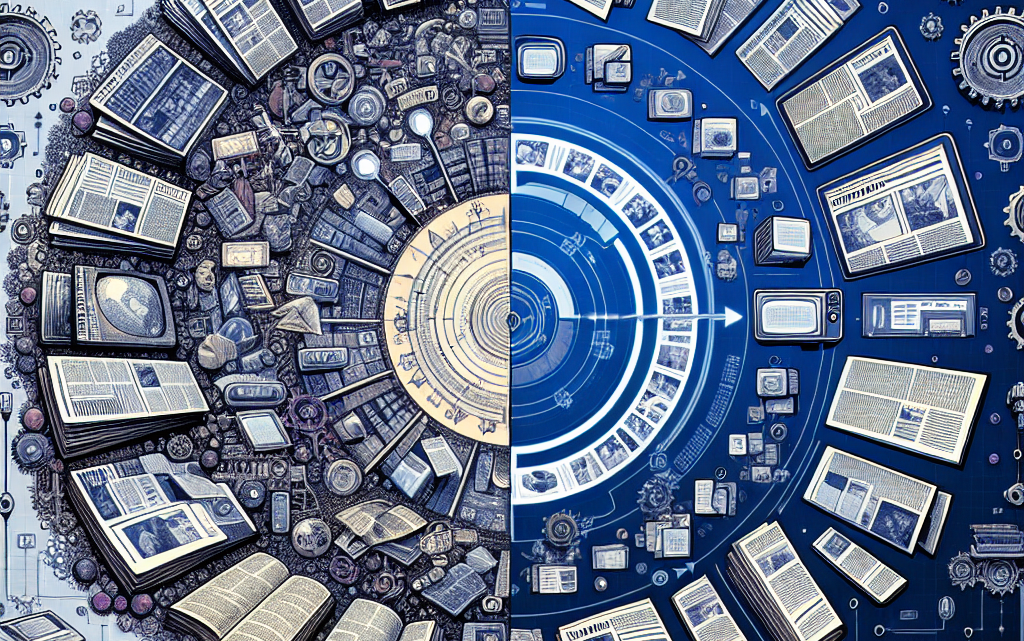Introduction
The rapid evolution of technology has significantly transformed various aspects of our lives, including the way we consume media. Traditional media forms such as newspapers, magazines, radio, and television are undergoing profound changes driven by technological advancements. This article aims to explore how technology is changing traditional media, the benefits and challenges associated with these changes, and what the future might hold.
The Shift from Analog to Digital
Accessibility
One of the most notable impacts of technology on traditional media is the increased accessibility. Digital platforms allow users to access news, entertainment, and information from anywhere in the world, at any time. This shift from analog to digital means that people no longer need to rely on physical newspapers or scheduled TV programs to stay informed. Everything is just a click away.
Content Delivery
Traditional media outlets have embraced digital technologies to deliver content more efficiently and effectively. For instance, newspapers now have online versions that offer real-time updates, multimedia content, and interactive features. Television networks stream their programs online, allowing viewers to watch their favorite shows on-demand.
Advancements in Content Creation
Quality and Variety
Technology has also revolutionized content creation in traditional media. High-definition cameras, drones, and editing software have significantly improved the quality of video and audio content. Additionally, advancements in software and hardware have enabled content creators to produce a wider variety of content, from short social media videos to full-length documentaries.
User-Generated Content
With the rise of social media and user-generated content platforms, the lines between traditional media and new media are blurring. Ordinary people can now create and share content that reaches millions, challenging the dominance of traditional media outlets. This democratization of content creation has led to a more diverse media landscape.
Challenges Faced by Traditional Media
Competition
Traditional media companies face fierce competition from numerous digital platforms. Social media sites, streaming services, and online news portals compete for the same audience, leading to declining viewership and readership for traditional media.
Monetization
Monetizing content has become a significant challenge for traditional media outlets in the digital age. Advertising revenue models that worked well for print and broadcast media are less effective online. Media companies are exploring various monetization strategies, including subscription models, paywalls, and sponsored content.
Fake News and Misinformation
The digital age has also seen a surge in fake news and misinformation. Traditional media organizations are tasked with maintaining credibility and trust while competing with less reputable sources that can spread false information quickly and widely.
The Future of Traditional Media
Adaptation and Innovation
To survive and thrive in the digital age, traditional media must continue to adapt and innovate. This includes embracing new technologies, rethinking content delivery methods, and exploring new business models. Collaborative efforts with tech companies and startups can also drive innovation.
Hybrid Models
Many traditional media companies are adopting hybrid models that combine the strengths of traditional and digital media. For example, print newspapers may offer premium digital subscriptions that include exclusive online content and interactive features. Television networks can offer both linear broadcasts and on-demand streaming services.
Focus on Credibility
As misinformation becomes a growing concern, traditional media outlets must focus on maintaining credibility and trust. This involves rigorous fact-checking, transparent reporting, and building a strong relationship with the audience. Being a reliable source of information can help traditional media stand out in a crowded digital landscape.
Conclusion
The impact of technology on traditional media is profound and multifaceted. While it presents numerous challenges, it also offers exciting opportunities for growth and innovation. By embracing digital transformation and focusing on quality and credibility, traditional media can continue to play a vital role in the modern media ecosystem.

